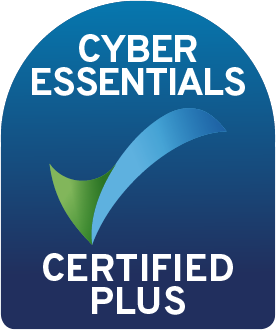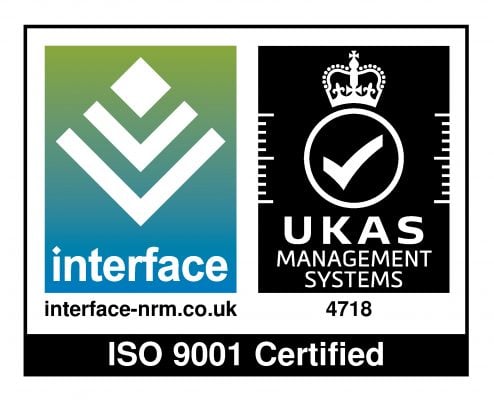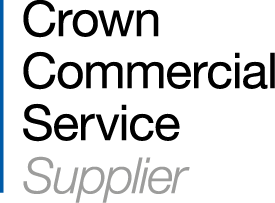Since the beginning of the AI boom, there’s been a great deal of discourse around AI's future role within various business functions, particularly within L&D and corporate training - but what about HR?
In the February issue of our LinkedIn newsletter, Essential E-learning with Hubken, we referenced a recent Forbes article exploring the ten HR trends to consider when including generative AI (Gen AI) as part of your 2025 HR roadmap. In this blog, we’ll expand on some of the trends discussed in the article and share our insights and top tips on leveraging AI tools to optimise your HR function. Let’s dive in.
AI skills disruption: Reskilling and upskilling employees
According to a stat shared by Forbes, 44% of worker skills will be disrupted in the next five years and 40% of these will be affected by gen AI tools. Many employees will have growing concerns about job displacement, while employers may feel growing pressure to stay competitive by preventing skills gaps from widening.
To support both employees and employers, HR teams should focus on implementing practices that address skill disruption caused by AI tools.
AI can bring numerous benefits to a business, including increasing productivity and boosting efficiency by speeding up manual processes and mitigating the risks of human error. However, to take advantage of these benefits, employers need to know how to use AI effectively and responsibly.
Upskilling programmes focused on AI training should be a core component of training activities and e-learning courses in 2025, ensuring employees are well-versed in all things AI.
Adapting employee roles to keep up with changing demands
Is upskilling enough to effectively address the ‘skill disruption’ outlined above?
Once employees are comfortable using AI tools, HR teams can begin to re-evaluate job roles. For example, if an employee is experiencing significant time savings by automating manual processes, their role may be adapted by enabling them to take on new responsibilities. To support this process, HR teams can implement reskilling programmes that allow employees to adapt to changing role requirements.
The Forbes article discusses the idea of creating AI-human hybrid roles, particularly for entry-level jobs. These roles would give entry-level professionals the responsibility of AI oversight, delegating some tasks to AI, checking the accuracy and relevance of AI-delivered tasks and communicating the results to the wider organisation. By adapting employee roles to incorporate the use of AI technology, routine, time-consuming tasks can be automated, allowing employees to focus on high-value tasks. Other benefits include:
- Increased productivity – By allowing AI to handle mundane tasks like data entry, scheduling, and basic customer service inquiries, you are enabling entry-level employees to spend more time on higher-value activities that require critical thinking and problem-solving.
- Faster learning curve - AI-powered tools can provide immediate feedback and on-demand training, helping new employees quickly acquire the necessary skills and knowledge specific to their role.
- Improved decision-making – AI's ability to analyse large datasets can mean that entry-level employees are empowered to make better decisions.
- Reduced entry employment barriers - By automating some of the most basic tasks, AI can make entry-level roles more accessible to individuals with less experience.
- Career progression - As AI increasingly handles more routine tasks, entry-level employees can focus on developing more advanced skills, paving the way for improved career advancement.
In short, make sure you’re being proactive rather than reactive by building a fluid and highly skilled workforce that can easily adapt to changes brought about by AI.

Shifting focus for leaders
To experience the benefits of leveraging AI tools, managers and leaders need to be instrumental in encouraging employees to use them. Forbes noted that ‘leaders will need to encourage team members to not only experiment with AI in their jobs but also share results.’
To support this shift in focus towards the use of AI, once again HR teams may wish to adjust role requirements for leaders, ensuring AI-focused tasks are built into daily responsibilities for leadership teams.
Additionally, those in leadership roles should be encouraged to leverage AI tools to support their own activities. For example, AI tools can be used to elevate performance management practices such as identifying organisational skill gaps, building comprehensive employee improvement plans or creating ideas for employee development goals that align with wider company objectives.
Optimise your onboarding procedures
As we know, the most impactful and effective onboarding programmes are tailored to the unique requirements of each new starter. However, busy HR teams with a multitude of new starters don’t always have the time to personalise induction processes. This is where AI comes in.
HR teams can personalise onboarding programmes by asking AI tools to analyse criteria such as employment history, and role-based skills requirements. Using this data, HR teams can then use AI tools to map out a tailor-made onboarding programme that addresses specific needs and requirements that ensure new starters get the most out of their induction process.
Looking to take this one step further? Directly ask your new starter what their preferences are and build this into the onboarding development process. Find out the level of support they prefer, their preferred learning styles, or elements they enjoyed during previous onboarding programmes that they would like to incorporate into this new role. This information can be fed into your chosen AI tool and used to further personalise the onboarding process in a mere instant.

Leverage AI for more effective training
Artificial Intelligence is beginning to transform L&D into a personalised, data-driven, and efficient function. Instead of traditional, generic training, AI-powered platforms are starting to be able to tailor learning to individual needs, using data on skills gaps, learning styles, and performance to deliver customised content to the learner.
Real-time learning analytics can provide L&D teams with insights into engagement and effectiveness, ensuring alignment with business objectives. AI-powered chatbots and virtual coaches offer on-demand support and microlearning, making learning more accessible and continuous.
AI also streamlines content creation and curation by recommending relevant materials, reducing administrative overhead, and further boosting learner engagement. By integrating AI into skills mapping, organisations can proactively address future skill needs and upskill their workforce, ensuring they remain competitive.
In short, AI is moving L&D away from a static, reactive approach and towards a proactive, strategic role in workforce development.
Looking for more AI insights?
We have a whole host of free AI-focused content available now. From articles on boosting employee engagement and closing knowledge gaps to webinars highlighting key AI tools you should be using – don’t miss out on these essential AI insights. Visit our resources page to access them now.
Looking to deliver effective AI training this year? Make sure you are using the best tools for the job – discover our award-winning Totara and Moodle e-learning platforms here.
.png)
View our range of webinars
From AI and HR best practices to bespoke content design and the power of e-learning. Explore our range of completely free webinar recordings.
.png?width=810&height=113&name=Slim%20blog%20CTAs%20(25).png)
.png?width=1080&height=150&name=Slim%20blog%20CTAs%20(26).png)



